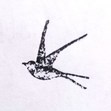Normality and How to Use It
It’s quiet in my house right now. It has been for a couple of weeks, and it’s strange. There should be more conversation, more laughter. I’ve been talking, but only to myself. I come home in the evening and the lights are still off, there’s nobody to greet me. I was used to all this, and it took a change to make me realise just how much I was used to it.
To clarify, everything is absolutely fine: my partner’s just off in Korea for a few weeks. But it’s been strange realising all the little things that I’d been so accustomed to, living in this house with her, all the little foibles of ordinary life that no longer apply when you’re not together. I’ve managed to only go slightly mad (I already bounced ideas off the Transformers on my desk, it’s not weird, what are you talking about), but even after a couple of weeks I’m still stumbling across things I’d never realised would be different.
Now this does have a writing-related point, and it’s one I’d not really thought about before. Because I write fantasy and sci-fi, and among other reasons, fantasy and sci-fi are great genres to write in because of how weird you can get. You can fill a world with incredible concepts; bizarre creatures, impossible cities, magic and technology and wonder to boggle the mind. That’s sort of half the point of writing SF&F. But to make things feel fantastical, there needs to be a contrast. There needs to be ordinary life to for the extraordinary to work.
There doesn’t need to be much of it. In the Boiling Seas books there are only a few ‘normal’ sections: when Tal’s in town at the beginning of Blackbird, the scenes at the Lantern and a handful of others. Obviously even those scenes are only ‘normal’ for the Boiling Seas – Port Malice is still a weird and winding place, and there aren’t exactly many gigantic library towers full of magicians knocking around in our world. But they’re places where my characters are just… living. They eat, they sleep, they chat, they have a perfectly ordinary time. It gives a baseline against which the daring tomb-raids and giant airships can be measured, when I switch to the Big Fantasy Bits: a normal life from which my characters can be plucked when they go on their adventures.
As I said, ‘normal life’ in an SF&F setting doesn’t have to be that normal. I’ve written about elves living in glass towers on the Moon, about farmers in space, about canyons in the infinite desert – and that’s just me; there are plenty of wilder worlds out there to read. As long as it’s ‘normal’ for your characters, that works. But as I’ve learned over the last few weeks, you don’t need to change much for ‘normal’ to start feeling very weird very quickly. A barman on an orbital habitat can be thrown off his rhythm by an unexpected patron. A seasoned treasure-hunter can be made uneasy by just a lack of company. It doesn’t take much to establish normality in a very non-normal world, and it takes even less to undermine that normality. And from such small seeds of unease and change can great stories grow.



